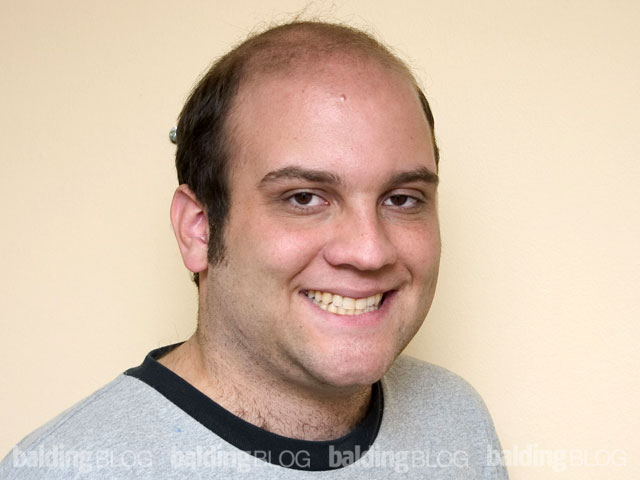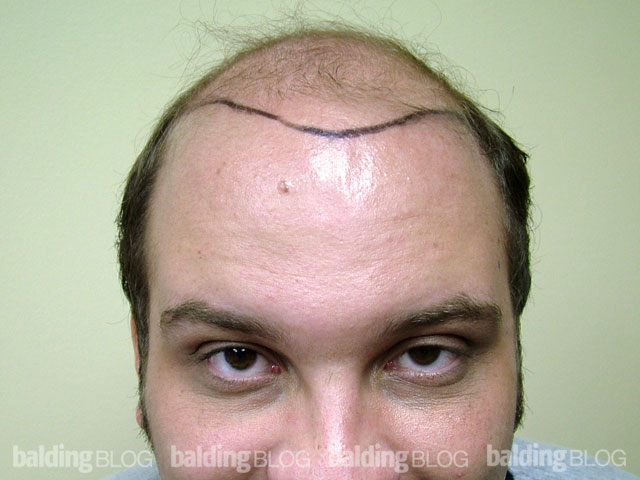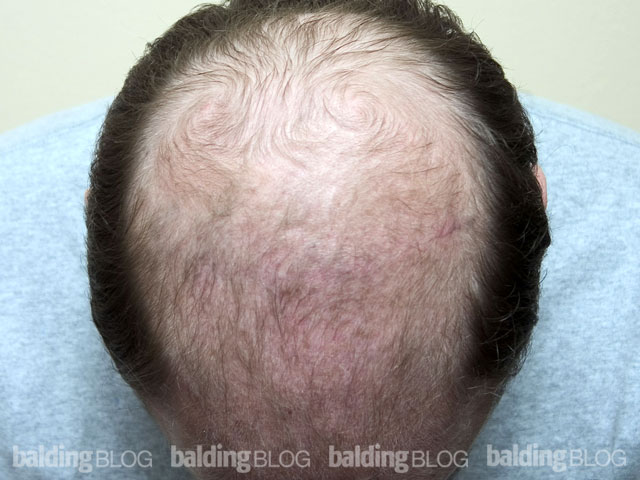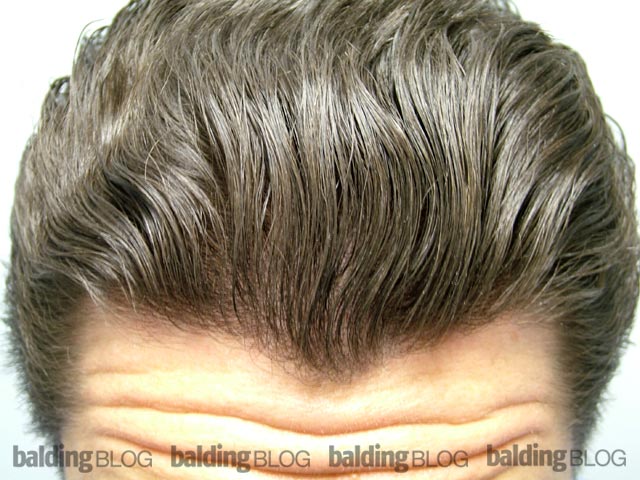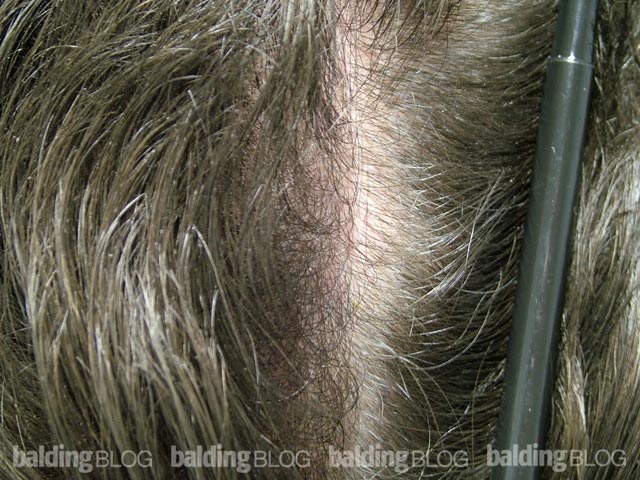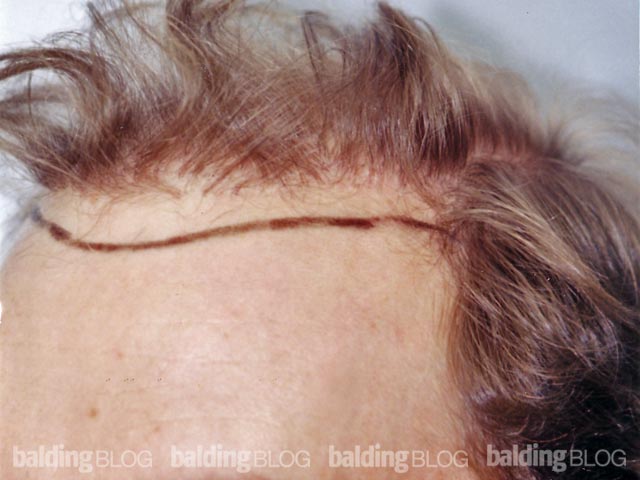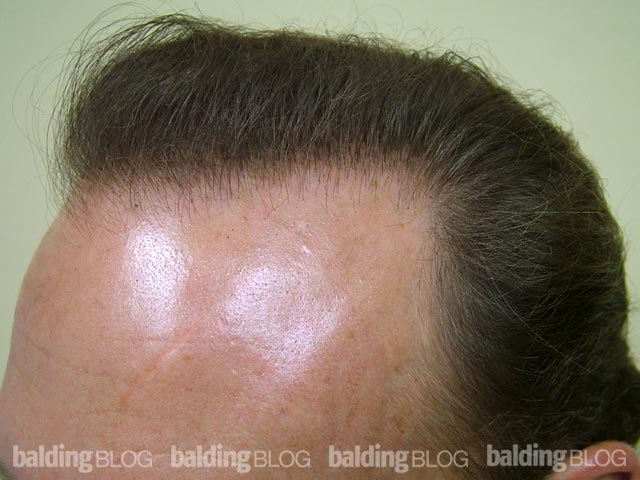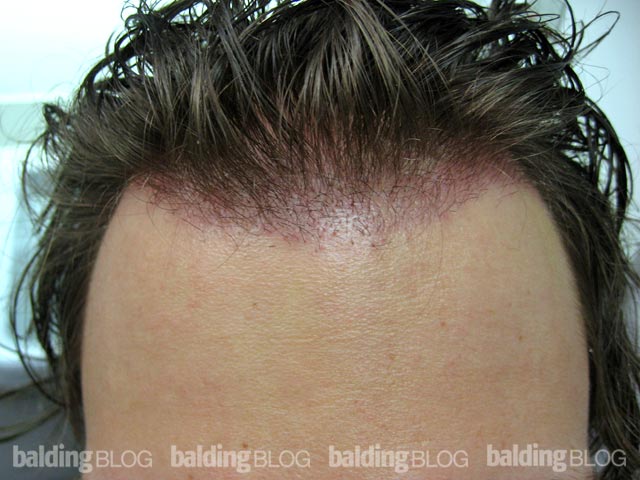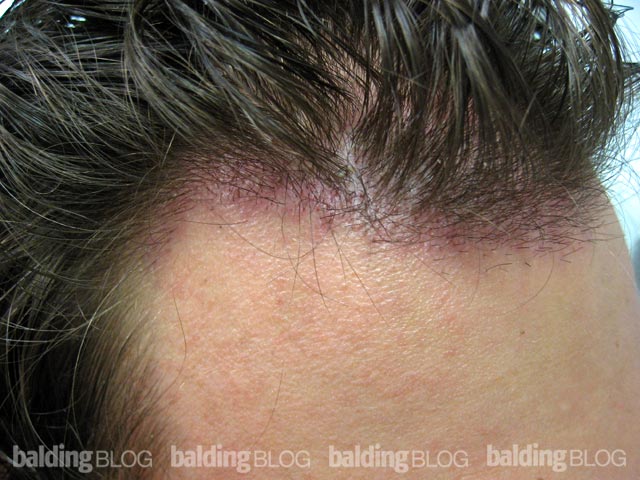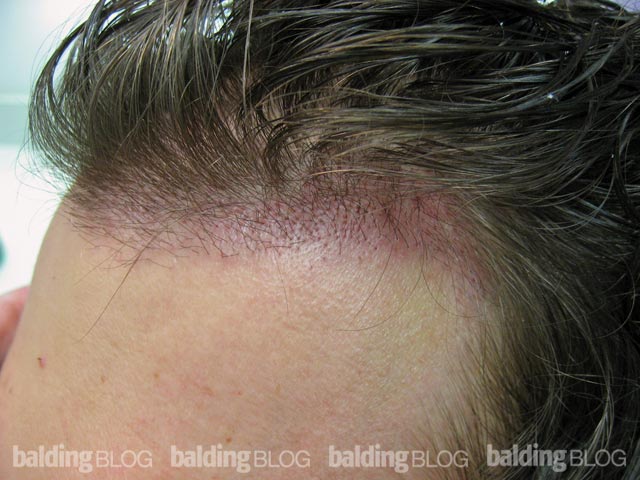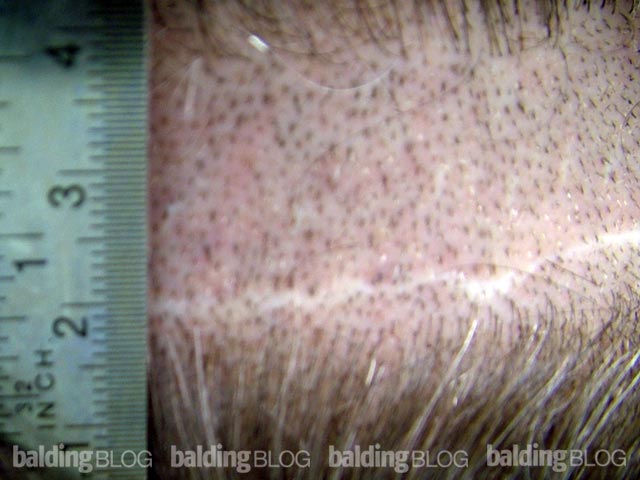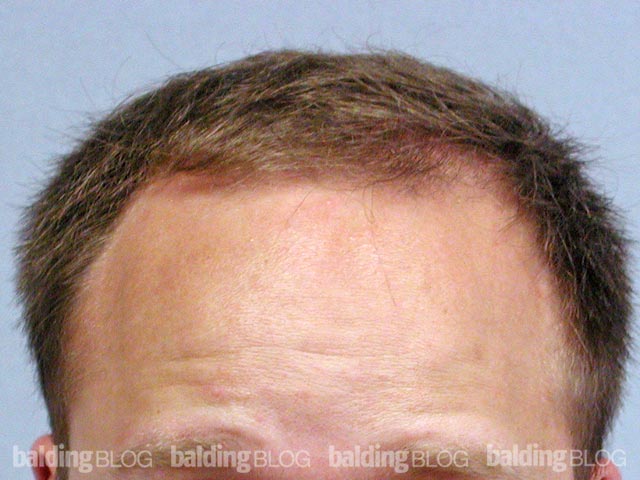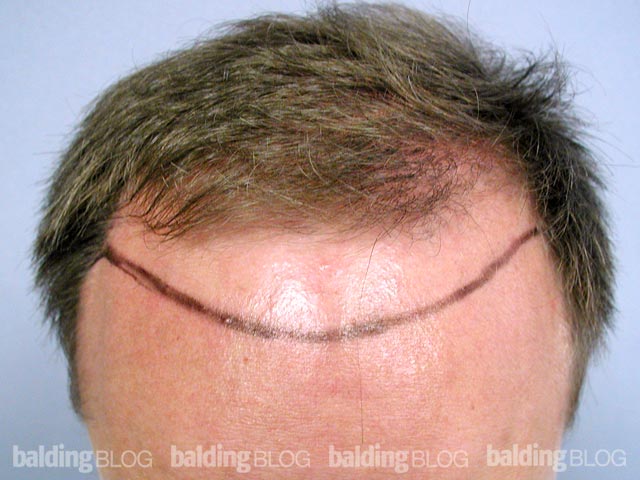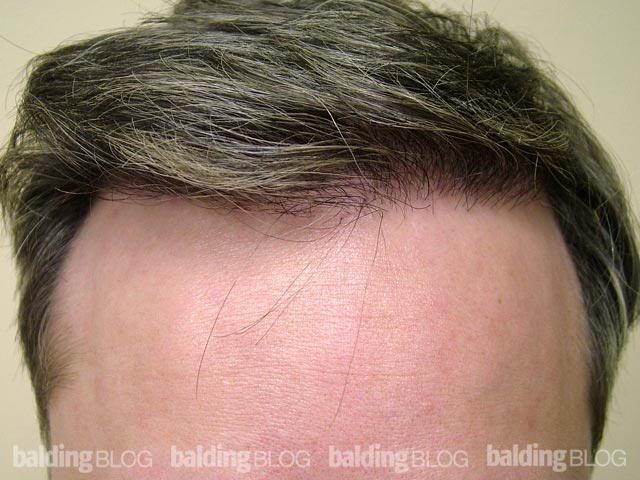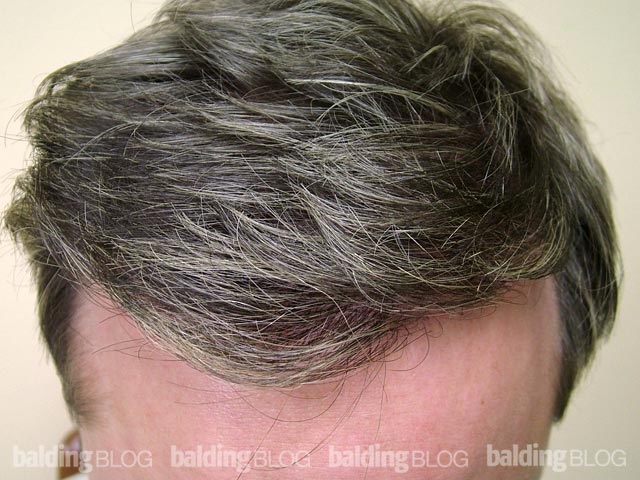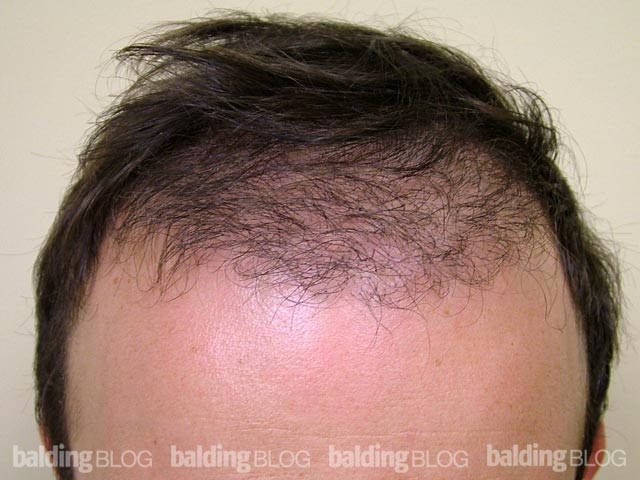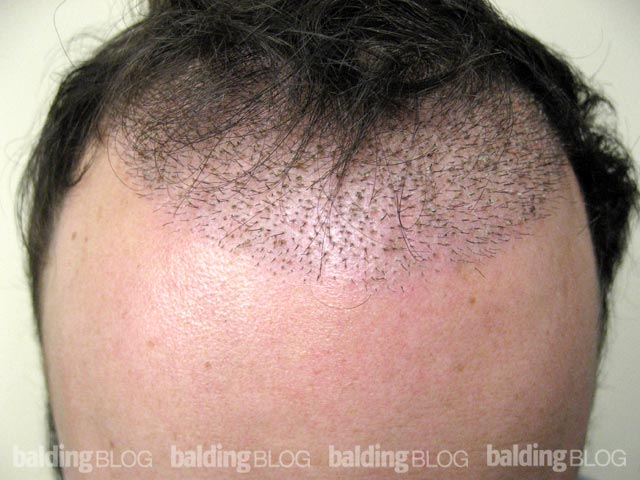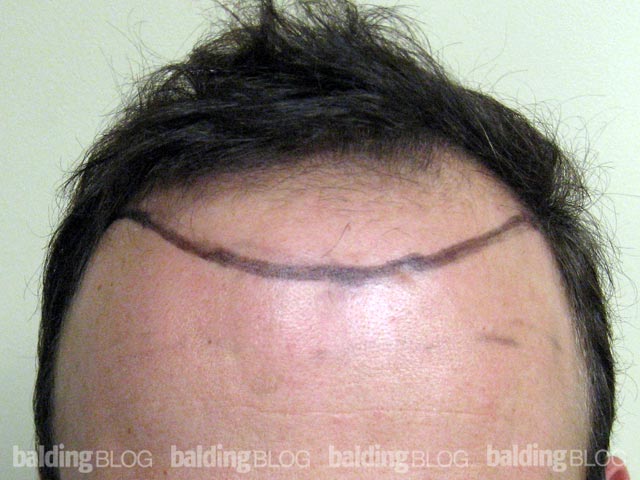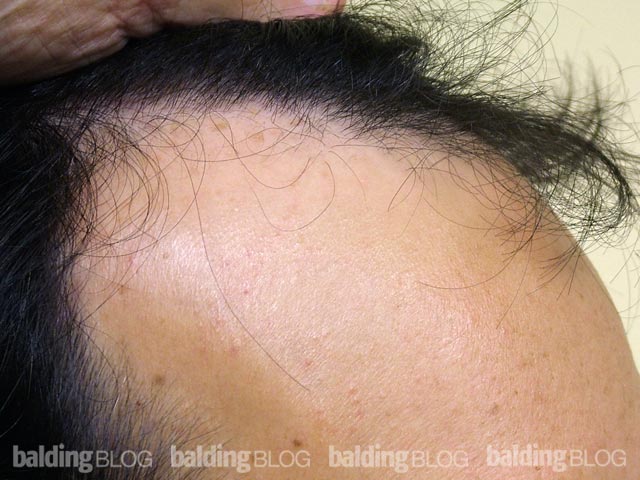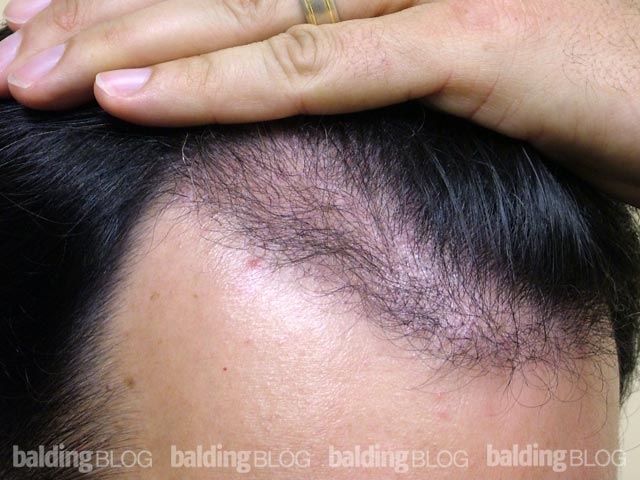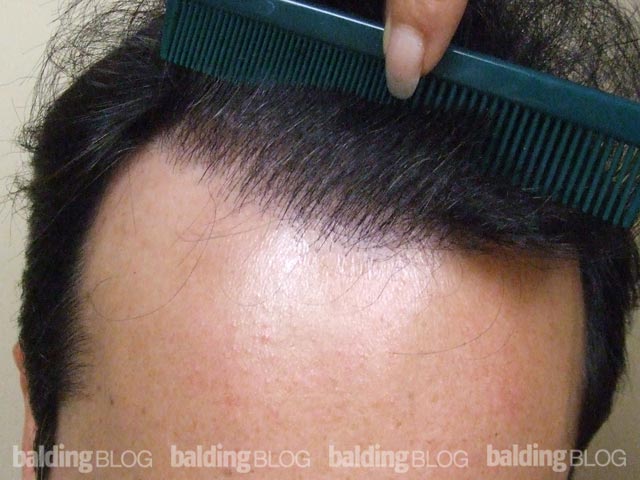I wanted to show some very early after from two patients that came in today. Both patients have given me permission to post their photos, and I appreciate them allowing me to do so. From time to time I post photos of patients just days or weeks after surgery, and I hope these types of posts help to answer one of the more popular questions I receive almost daily — “What will my head look like right after surgery?! I need to get back to work and I don’t want anyone to know!”
Patient 1 — 1 day after surgery:
This young man had around 1500 grafts placed in the crown and around 600 grafts in the front just 1 day ago. His skin is white and hair is blonde. There is almost no swelling and no sign of the surgery other than a faint pink hue which should go away for him in a day or two.
Here are two photos of his hairline. Click the photos to enlarge.
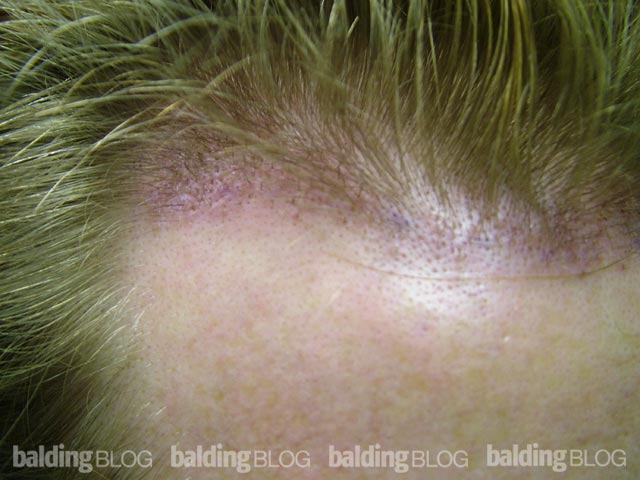
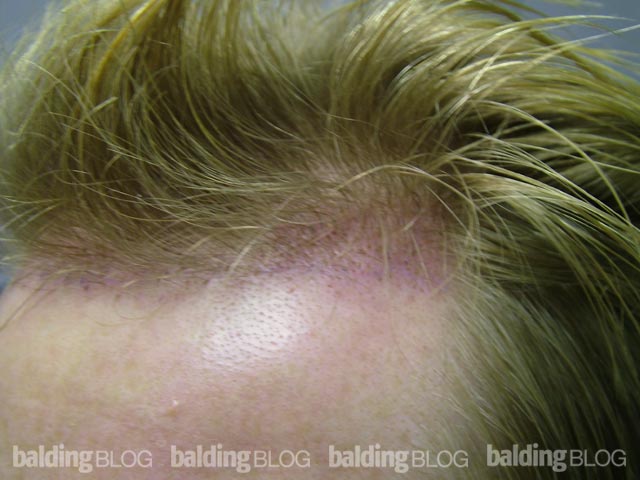
Patient 2 — 10 days after surgery:
This patient had frontal work to drop the corners of his hairline. Just 10 days out after 1040 grafts and you can barely see anything. Note that I had to hold his hair back on the left corner just to show the transplanted area. His hair naturally falls over that area, and as such, it provided him a perfect cover during the first day or two when his skin was pink in the transplanted area.
Click the photos to enlarge.
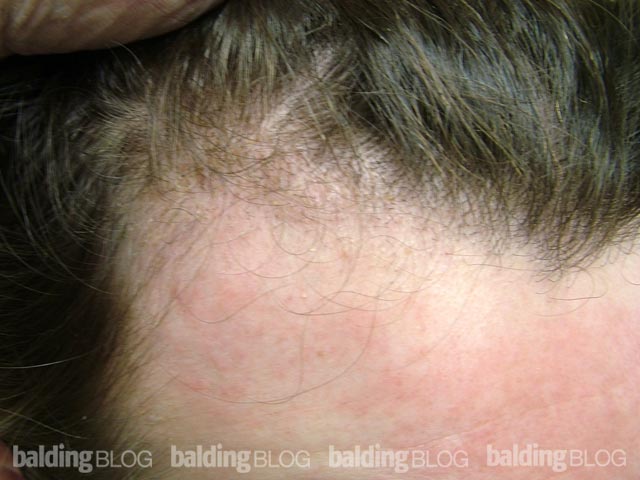
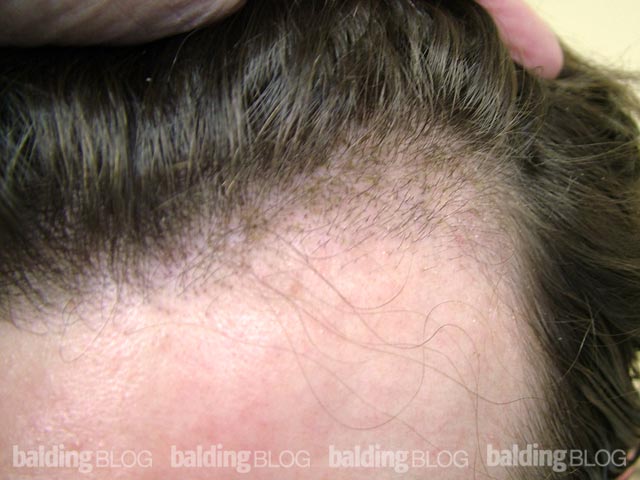

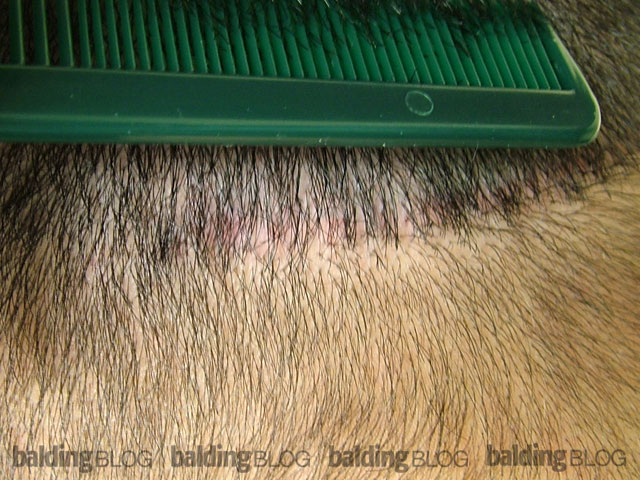
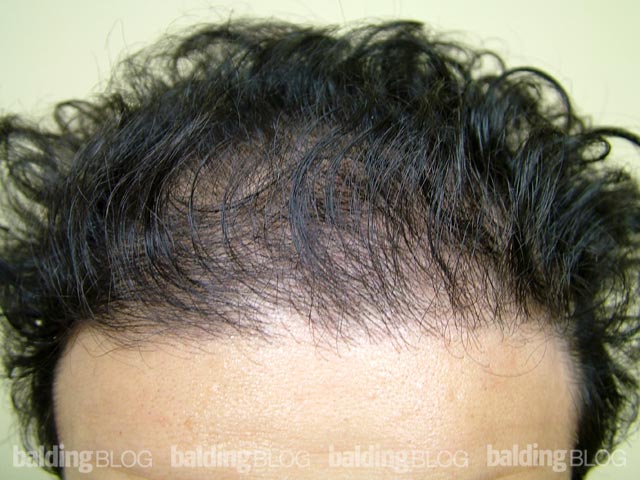
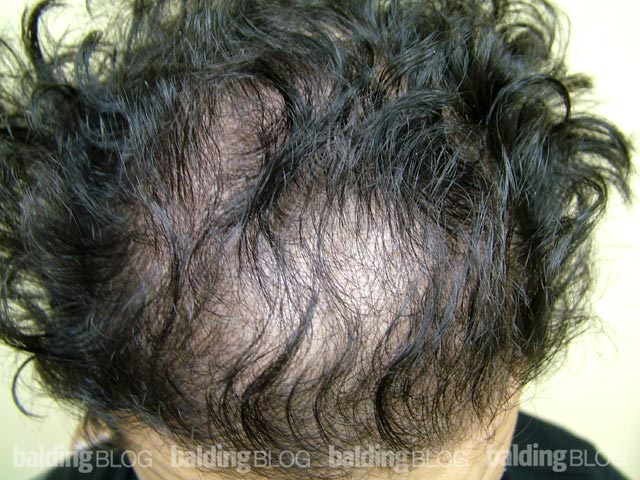
 I received quite a few emails today from readers of Balding Blog that saw me on the new
I received quite a few emails today from readers of Balding Blog that saw me on the new 